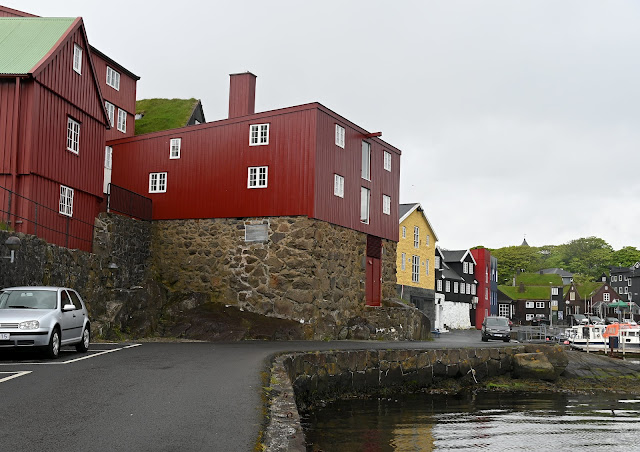Castles & ruins 34: Novigrad castle, Dalmatia, HR
Novigrad first mentioned by its name in a charter from 1409, when Ladislaus of Naples sold several towns on the Croatian coast to the Venetian Republic for 100,000 ducats. Originally may be built around 1220s on top of Romans fortifications and because of this got the name Castrum Novum (= Novigrad = New Castle). Before Romans here were settlements as early as Bronze age so some kind of fort definitely was here before.
By 1409 it fall to Venice as the whole coast got under their rule. The fort was reinforced and town of Novigrad become seat of Venetian governor. The fort served perfectly as a stronghold against any enemies, only once being briefly conquered by Ottoman Turks in 1647. It remain Venetian stronghold till the end of the Republic in 1797, coming then to Austria/Austro-Hungarian Empire and later to Croatia/Yugoslavia.
During Jugoslavian war in 1990s Novigrad and the whole area around went through ferocious battles, the fort survived by miracle really. Today it is on a list of protected historic monuments of Croatia, you can visit it for free whole year around.
In 1386-1387 Queen Elizabeth Kotromanić (Јелисавета Котроманић) widow of the Croatian-Hungarian King Ludovic of Anjou (King Louis I the Great) and her daughter Mary were imprisoned in the fortress by their opponents-pretenders of the thrones. They were about to be freed by Sigismund of Luxembourg, Mary' husband, but Elizabeth was strangled before they could reach the castle so only Mary survived.
There are 2 legends connected with her being in the area: one is that she with her own hands embroidered golden royal cloak for the priest while in prison – the very one still to be worn by priests of the Birth of the Blessed Virgin Mary church in Novigrad.
The other one about her trying to steal a finger of st.Simeon mummy from Zadar church – that happened in 1371, before she was imprisoned. During the mass the queen secretly torn off the saint finger from the mummy in the reliquary and hid it on her breasts but the finger immediately started to decompose and worms and maggots crawled all over the queen so she had to return the finger immediately. To get forgiveness for her sin she ordered extremely luxurious new chest for the mummy (1.92 m long x 62.5 cm wide x 56 cm high) of gold and silver (at least 250kg of preciouse metals there). You can see the chest on display once a year in October 8that 08.30am in Zadar in the Church of St.Simeon.
There is a legend as well connected with Novigrad castle only: at some time long ago the town was suffering of plague so badly more than half of the people died, the rest were afraid to go out because once you were on the streets – the plague got you. There were no doctors to help, no priests to save the town – really dark times and no hope.
But one day a young knight rode to the deserted streets of the town with no fear 'cos he personally knew the plague – an old hug, he found her, and bind her and took her up to the castle to the cave near left tower. He through the plague there and put a huge stone over the cave so she will never be able to come back. And streets of the town were swept with the fresh air and people could finally get to the streets with no fear. Knight showed them the cave and told them to guard the entrance to keep the plague inside. And so they did.
It was possible to see the stone until around 1960s or so, when landslide broke it in half. Locals decided that legends or not – some holes better be covered and put a new cover on the cave. Today it is barely visible at the end of Uz Čun street near the castle.
From above: Novigrad













Comments
Post a Comment